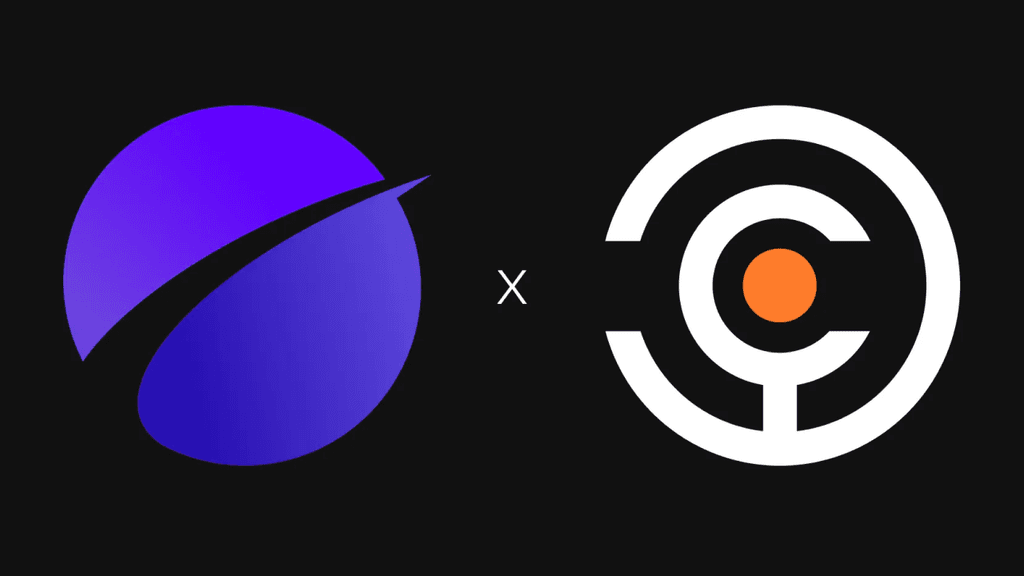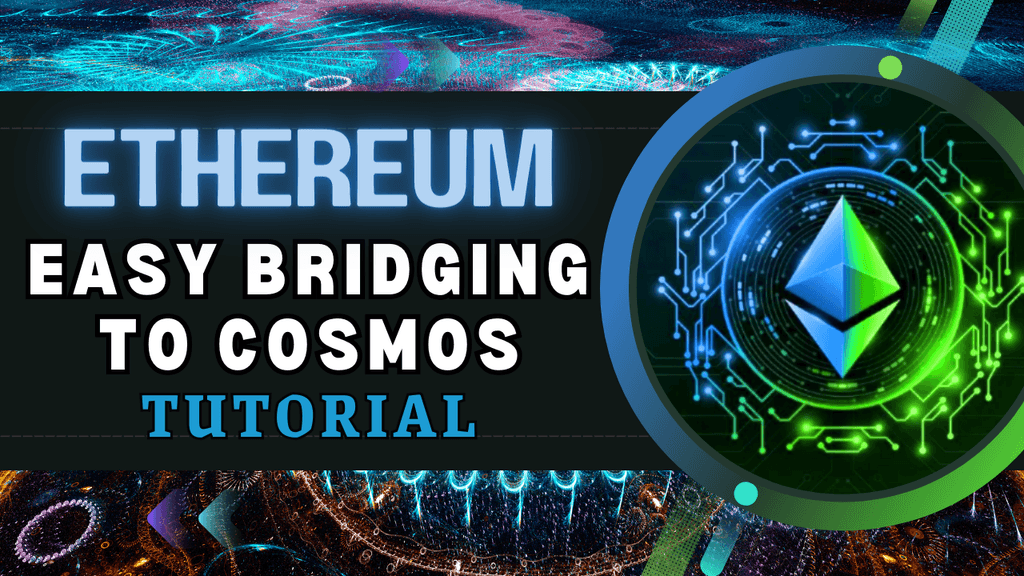As the first implementation of IBC bridging to DotSama, Centauri enables the possibility for users to move digital assets seamlessly between the Polkadot/Kusama (DotSama) ecosystems and the blockchains connected to the IBC, such as the Cosmos ecosystem.
The days of DeFi limited by Ethereum are a thing of the past; as many other chains and ecosystems have become significant DeFi hubs with their own individual advantages and earnings potentials. Connecting the plethora of growing ecosystems via Centauri allows users to maximize capital efficiency in a UI/UX-centric way. Centauri ultimately empowers users to take the utmost advantage of the best and most suited opportunities DeFi has to offer for users and developers alike.
When we announced Centauri, our initial vision was laser focused — to architect the first bridge between the DotSama and Cosmos ecosystems. A lofty goal in itself yet we understood the potential was far more significant, and our technology could expand to other communities and their respective ecosystem. Centauri would mark the first expansion of IBC outside of the Cosmos ecosystem with significant implications for DeFi as a whole, yet more significant was our bridging team’s realization that the components needed for a DotSama
A brief history of IBC
As we outlined in our first article of this bridging series, the siloed architecture of most blockchains today has necessitated the development of various forms of bridges. These bridges allow token transfers to occur between previously disconnected blockchains, but oftentimes make tradeoffs that undermine the decentralized nature of blockchain and distributed ledger technology. We believe that centralized and custodial solutions hold no place in DeFi, and as such we have recognized the pivotal role the Inter-blockchain Communication Protocol (IBC) will play in the future of blockchain innovation.
In short, IBC is an interoperability protocol that allows 2 blockchains to communicate with each other. IBC was born in the Cosmos ecosystem and can be easily implemented by any blockchain built using the Cosmos SDK. This means that self-sovereign Cosmos-based blockchains are able to communicate trustlessly among themselves via IBC.
Unlike other bridges, IBC is a general purpose message passing protocol that can facilitate the bidirectional transfer of any data form. This opens the possibility for interactions that go beyond the token transfers enabled by other bridging protocols. For example, with IBC you could call a function on Chain A from Chain B and vice versa which unlocks a whole new realm of possibilities and pathways.
Additionally, IBC’s trustless design means that no third-party intermediaries are introduced in the line of communication. Rather, communication via IBC is secured by the consensus mechanisms of the 2 blockchains it is connecting. The security and reliability of messages passed using IBC are therefore determined by the underlying blockchains themselves, rather than a trusted intermediary.
However, IBC faces certain challenges in terms of scalability due to being a Cosmos-native protocol. Since it was intended for use between blockchains built using the Cosmos SDK, changes are necessitated at the infrastructure level to add support to pre-existing blockchains to host the necessary components to support communication via IBC.
The Composable Finance bridging team has taken these challenges head-on with the development of Centauri, our trustless bridging hub which extends the reach of IBC to new ecosystems by pushing infrastructure-level changes to add IBC support to these pre-existing blockchains. Ultimately, our work is further expanding the horizons of this necessary infrastructure which will not only impact the concerned ecosystems but bring trustless communication to all of DeFi in the foreseeable future.
Our roadmap for implementing and extending IBC across various DeFi ecosystems
We have been hard at work developing a generalized toolkit to facilitate the implementation of IBC on as many ecosystems as possible. However, there are fundamental differences in blockchain architecture that make 1:1 ports of this toolkit impossible. Tweaks and adjustments are necessary for implementation in every ecosystem, thus, we focus our efforts and tackle each implementation sequentially.
This means that Centauri will roll out in phases over the course of the next quarter. These phases are expected to roll out as follows:
Kusama Polkadot
Kusama
Kusama
Cosmos
Cosmos
With the completion of each stage, more opportunities and liquidity will become available to DotSama natives and the collaborative ecosystems respectively. After each of the aforementioned implementations are finalized, the focus will shift to bringing IBC to new ecosystems which our bridging team is actively researching. Our roadmap extends far beyond the connections mentioned above as we have already begun to plan on connecting to other various chains and ecosystems via Centauri which we will cover in the third post of this series.
DotSama
Centauri in its inception was designed to bridge the DotSama and Cosmos ecosystems via IBC. This would enable the trustless, bidirectional exchange of assets and information between 2 of DeFi’s most dominant, interoperable ecosystems. There were 5 key pieces needed in order to achieve this goal:
IBC-rs
An implementation of IBC in Rust, which allows for IBC messages to be interpreted on Picasso (and other DotSama-based chains)
Pallet IBC
Which is composed of the aforementioned IBC-rs implementation and a CosmWasm light client (ic07). Together these enable our parachain to process and interpret IBC packets.
GRANDPA light client
GRANDPA is a protocol developed by Parity to verify finality proofs of parachain headers. Our custom light client was based on this protocol and compiles with IBC-rs, allowing us to integrate the GRANDPA client into our IBC pallet (pallet-ibc) to communicate with Cosmos chains or any other chain with a GRANDPA light client implementation.
ICS-8 WASM client
The ICS-8 client will enable light client implementations written in CosmWasm to run natively on blockchains built with the Cosmos SDK. This allows for a GRANDPA light client implementation on Cosmos as a CosmWasm contract which can be deployed to Cosmos chains, allowing blockchains in the Cosmos ecosystem to track the finality of DotSama parachains.
Hyperspace relayer implementation
A custom-built relayer implementation allows for transferring arbitrary packets between DotSama and Cosmos-based blockchains using the IBC protocol. In the future we expect other relayer solutions to add support for cross-ecosystem message passing via IBC. Still, for the time being, Hyperspace is the only relayer implementation with this functionality.
The result of all the pieces of infrastructure we are pioneering will come together as proposed in the diagram below:
Kusama
While Centauri was initially designed with a bridge between DotSama Kusama and Polkadot. Currently, there is no bridge between the 2 relay chains, and as the first IBC bridge outside the Cosmos, this development is of paramount importance for both the DotSama and Cosmos communities.
Extension of IBC to other ecosystems
Our bridging team is already researching expansion to ecosystems such as Ethereum and Aptos. Although this research is preliminary and bridges to these ecosystems are not currently under development, both will utilize similar tooling to what was detailed above. Due to this development, it is accurate to say that Centauri is much more than just a bridge between Cosmos and DotSama. Centauri has the potential to connect any 2 blockchains which are capable of housing a light client implementation.
Therefore, Centauri is more aptly described as the trustless bridging hub used to connect light-client-enabled blockchains. A rudimentary infrastructure to actualize the true promise of DeFi and unlock new opportunities and innovations across any chain, any money, anywhere.
About Composable & Picasso:
Composable Finance (“Composable”) is dedicated to improving the accessibility, quality, transparency, efficiency, and security of decentralized finance (DeFi). We aim to do this by pioneering innovative Web3 user experiences in a trustless, non-custodial, and decentralized manner. Composable’s technology stack enables and combines key services across different DeFi ecosystems and protocols, such as Ethereum, Polkadot, Kusama, Cosmos, and the NEAR Protocol.
Picasso is our layer 1 blockchain acting as an infrastructure layer to pioneer interoperable DeFi solutions, with a native token named $PICA which is available at the Pablo DEX. Picasso is equipped with a robust set of novel DeFi primitives that are built as modular pallets. These pallets are designed to attract liquidity from the broader DeFi landscape whilst promoting interoperability between various ecosystems.





